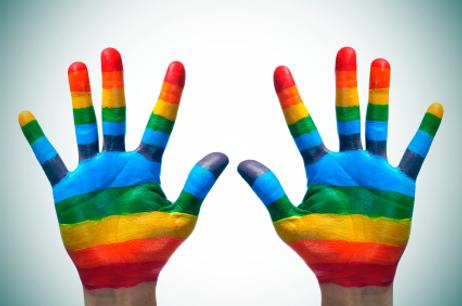Gay-straight student alliances have been formed in schools for more than two decades. Still, many students face seemingly insurmountable odds in getting their extracurricular organizations accepted in the public school system. Schools across the country have tried to keep these clubs from forming despite an act that clearly states the rights of students of all types of sexual orientation. Recently, Education Secretary Arne Duncan sent a “Dear Colleagues” letter to school districts, reminding them of a law passed by the Reagan administration that allows LGBT students to organize clubs and alliances on school property. We will examine that letter, as well as the 1984 legislation that requires schools to treat all extracurricular activities equally regardless of race, religion, or sexual orientation.
The Problem for Gay-Straight Student Support Groups
According to an article in the Atlanta Journal-Constitution, the problem with gay-straight support groups in public schools came to the forefront of public policy in 2006 when White County High School in Georgia tried to ban a gay-straight alliance student club from forming at the school. The argument was taken to court, where Federal District Judge William C. O’Kelley wrote a 35-page decision that issued a permanent injunction requiring the school to allow the group to meet on its campus. However, this is not the first time a situation involving a gay-straight club was taken to court.
In 2000, Colin vs. Orange Unified School District also resulted in a ruling that required a school to allow a gay-straight alliance to meet on school property. The case was handled by Lambda Legal, and it was the first time a school was given such an order, according to a report at the Washington Blade. Hayley Gorenberg, deputy legal director for Lambda Legal, commented to the Blade on both the 2000 ruling and the recent letter from Secretary Duncan, saying, “With today’s directive from the Department of Education, we hope that every administration in every school district across the country gets the message loud and clear: If you allow student clubs on campus, then you must allow gay-straight alliances equally.”
The Equal Access Act
Secretary Duncan’s letter refers explicitly to the Equal Access Act signed into law by President Reagan in 1984, which was created to ensure students in public secondary schools would have equal access to extracurricular clubs at their schools. In his letter, Secretary Duncan quotes a predecessor, Secretary Richard W. Riley, who said of the Equal Access Act, we “protect our own freedoms by respecting the freedoms of others who differ from us.” Duncan goes on to state in his letter that the Equal Access Act creates an environment where students can discuss topics openly and civilly, combating elements like bigotry, hate, and bullying in public schools.
According to Wikipedia, the Equal Access Act was originally a response to religious groups that wanted to ensure students could conduct bible studies after school and during lunch hours. However, it has also become an essential tool in the fight for gay-straight alliances to form clubs at schools that are uncomfortable with the idea. Groups were allowed to create in public schools if they met the following criteria:
- The host school is a secondary public school that receives federal monies
- There is at least one extracurricular club already meeting at the school
- Attendance for the club is strictly voluntary
- The club is student-initiated and not sponsored solely by the school, teachers, or the government
- The group is not disruptive to the daily activities within the school
The act was first tested in 1990 when the Supreme Court used the legislation to allow a Christian group to meet in the case of Westside Community Schools vs. Mergens.
This video from PBS illustrates how a GSA club strengthens a high school community.
The Advantage of Gay-Straight Alliances in Schools
According to a report at Education Week, a nationwide survey conducted by the Gay, Lesbian, and Straight Education Network in 2009 found that schools that hosted gay-straight alliances were less likely to hear negative talk and epithets about gay students. Fewer LGBT students felt unsafe in their schools if a club was present. Duncan has also stated in his letter that these clubs are essential to ensure schools offer a safe community for all students by combating bullying and harassment of LGBT students overall.
In his letter, Duncan wrote, “Nationwide, students are forming these groups in part to combat bullying and harassment of LGBT students and to promote understanding and respect in the school community. By encouraging dialogue and providing supportive resources, these groups can help make schools safe and affirming environments for everyone. But in spite of the positive effect these groups can have in schools, some such groups have been unlawfully excluded from school grounds, prevented from forming or denied access to school resources.”
This video describes the activities of "LIVE OUT LOUD," a group that promotes gay-straight alliances in high schools around the NY-NJ-CT area.
Duncan’s letter has been applauded by many, including the Centers for Disease Control and Prevention. In response to Duncan’s writing, Howell Wechsler, director of the CDC’s division of adolescent and school health, told Education Week, “This report should be a wake-up call for families, schools and communities that we need to do a much better job of supporting these young people. Any effort to promote adolescent health and safety must take into account the additional stressors these youth experience because of their sexual orientation, such as stigma, discrimination, and victimization. We are very concerned that these students face such dramatic disparities for so many health risks.”
The letter has gone to school districts nationwide to explain President Obama’s support of gay-straight alliances in schools and assist students in forming their support groups and clubs.
Questions? Contact us on Facebook and Instagram. @publicschoolreview
#LGBTQ+Rights #GayStraightAlliances #EqualAccessAct #SchoolInclusivity #AntiDiscrimination #publicschools











